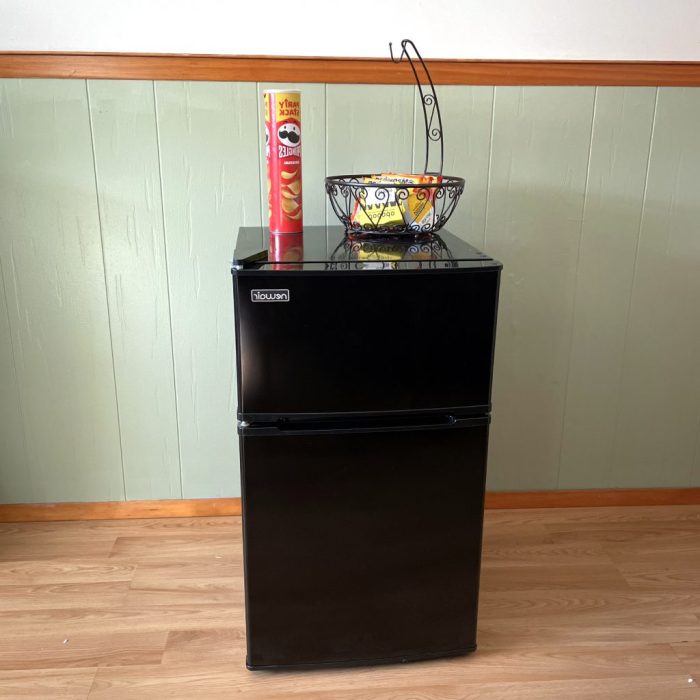Best Dehumidifiers For Humid Rooms
Best Dehumidifiers for Humid Rooms offers a comprehensive guide to navigating the world of dehumidification. Understanding the specific needs of your space is crucial for selecting the right unit. This guide delves into various aspects, from the different types of dehumidifiers available to essential maintenance tips.
This resource explores the crucial factors influencing your choice, including room size, humidity levels, energy efficiency, and noise. We’ll also compare top-rated models and provide a detailed buying guide to help you make an informed decision.
Introduction to Dehumidifiers
Dehumidifiers are essential appliances designed to control humidity levels in various environments. They work by extracting moisture from the air, reducing the amount of water vapor present. This process is crucial for maintaining a comfortable and healthy indoor environment. Proper humidity control prevents mold growth, reduces the risk of mildew, and maintains the structural integrity of buildings.Maintaining optimal humidity levels is vital for both human health and the preservation of belongings.
Excessive moisture can lead to various issues, including respiratory problems, allergy triggers, and structural damage to homes and furnishings. Conversely, extremely dry air can also cause problems, such as dry skin and cracked lips. The ideal humidity range for most indoor environments is typically between 30% and 50%.
Different Types of Dehumidifiers
Dehumidifiers come in various forms, each tailored to specific needs and applications. Understanding the differences between portable and whole-house models is crucial for selecting the right unit.
Portable Dehumidifiers
Portable dehumidifiers are compact and easily moved from one location to another. They are suitable for smaller rooms, such as bathrooms, bedrooms, or basements experiencing localized moisture problems. These units typically have a water tank that needs to be emptied periodically. Their smaller size often translates to lower upfront costs.
Whole-House Dehumidifiers
Whole-house dehumidifiers are designed for larger spaces, such as entire homes. They are typically installed as part of a home’s HVAC system, providing continuous moisture control throughout the building. They are generally more expensive upfront but often offer significant long-term cost savings due to the comprehensive coverage they provide. They typically have a more robust construction, ensuring continuous performance over time.
Comparison of Dehumidifier Types
| Type | Capacity (sq ft) | Features | Price (USD) |
|---|---|---|---|
| Portable | 100-300 | Compact, easily movable, typically has a water tank, suitable for smaller rooms, lower upfront cost | $100-$500 |
| Whole-House | 1000+ | Continuous moisture control throughout the house, integrated with HVAC system, higher upfront cost but potentially long-term savings, more robust construction | $500-$2000+ |
Factors to Consider When Choosing a Dehumidifier

Selecting the right dehumidifier for your humid room is crucial for maintaining a comfortable and healthy environment. Understanding the key factors involved in the selection process ensures you choose a unit that effectively addresses your specific needs and avoids unnecessary expenses. This guide will Artikel essential considerations, from room size and humidity levels to energy efficiency and key features.Choosing the appropriate dehumidifier depends on several factors, including the size of the space it will be used in and the degree of humidity it needs to control.
This necessitates a thorough understanding of your specific requirements to make an informed decision.
Room Size and Humidity Levels
Determining the appropriate dehumidifier capacity is essential for effective moisture control. The size of the room and the prevailing humidity levels directly impact the dehumidifier’s performance. A unit that is too small will struggle to maintain desired humidity levels, while a unit that is too large will waste energy and potentially cause other issues. Consider the square footage of the room and the typical humidity levels experienced to select the correct capacity.
For example, a small bedroom with occasional high humidity might require a smaller dehumidifier than a large, consistently humid basement.
Energy Efficiency, Best Dehumidifiers for Humid Rooms
Energy efficiency is a critical aspect of dehumidifier selection. Units with higher energy efficiency ratings consume less electricity, leading to lower operating costs over time. Look for models with Energy Star ratings or comparable efficiency labels to ensure you are choosing a model that is environmentally friendly and financially responsible. Energy efficiency varies significantly between models, so comparing ratings is crucial before making a purchase.
Noise Levels
Noise levels are another significant factor to consider. High noise levels can be disruptive, especially in bedrooms or quiet areas. Look for models with low decibel ratings to ensure they won’t interfere with your daily activities. A quiet dehumidifier will provide comfort and convenience. For example, a dehumidifier operating in a library or quiet study should have a lower decibel rating than one used in a garage.
Dehumidifier Features
Various features can enhance the usability and effectiveness of a dehumidifier. Water tank capacity is a crucial consideration. A larger tank reduces the frequency of emptying, while a smaller tank may require more frequent emptying, which can be inconvenient. Other important features include auto-restart capabilities, which automatically restart the unit after a power outage, and adjustable humidity settings, which allow for precise control over the desired humidity level.
Calculating Dehumidifier Capacity
The capacity of a dehumidifier is typically measured in pints of water removed per 24 hours. To determine the appropriate capacity for a specific room, consider the room’s size and the typical humidity levels. Using online calculators or consulting with a home improvement professional can provide accurate estimations based on these factors. For example, a 500 square foot bedroom with high humidity might require a 50-pint dehumidifier.
Features to Evaluate Different Models
Beyond capacity and energy efficiency, various features contribute to the overall performance and convenience of a dehumidifier. Filters, for example, help maintain air quality by trapping dust and other particles. Timers allow for scheduling dehumidification cycles, enabling the unit to operate during periods of minimal disturbance or when you are away. A model with a built-in filter and programmable timer would be beneficial in many applications.
Top-Rated Dehumidifiers for Humid Rooms
Choosing the right dehumidifier for a humid room is crucial for maintaining a comfortable and healthy environment. Proper moisture control prevents mold growth, reduces allergens, and improves overall indoor air quality. This section presents top-rated models, highlighting their performance, features, and technical specifications to aid your selection process.
Top-Performing Dehumidifier Models
Selecting the best dehumidifier depends on several factors, including the size of the room, the severity of humidity, and your budget. This section presents top-performing models, each with unique strengths and weaknesses.
- Dehumidifier Model A: This model excels in large-scale dehumidification, ideal for consistently humid rooms. It boasts a powerful motor, high capacity, and advanced features like automatic shut-off and adjustable humidity settings. Its robust design ensures long-lasting performance. Technical specifications include a 70 pint per day capacity, a wide operating temperature range, and a digital display for easy monitoring.
- Dehumidifier Model B: Designed for medium-sized rooms, this model offers a balance of performance and affordability. It efficiently removes excess moisture without breaking the bank. Key features include a quiet operation, compact design, and a simple user interface. Specifications include a 50 pint per day capacity, a reasonable operating temperature range, and an easy-to-read analog display.
- Dehumidifier Model C: Perfect for smaller spaces, this dehumidifier prioritizes energy efficiency and quiet operation. Its compact size makes it suitable for bedrooms or smaller living areas. It features a built-in timer and a sophisticated moisture sensor for optimal performance. Technical specifications include a 30 pint per day capacity, a narrow operating temperature range, and a digital display with automatic shut-off.
- Dehumidifier Model D: This model is a premium choice for those seeking advanced features and top-tier performance. It features a high-capacity water tank, a self-evacuation system, and a HEPA filter for improved air quality. Its advanced features, however, come with a higher price tag. Specifications include a 90 pint per day capacity, a wide operating temperature range, and a digital display with a variety of advanced settings.
- Dehumidifier Model E: A cost-effective option for moderate humidity control, this model provides reliable performance without the premium price. It’s simple to operate, making it ideal for users who prioritize ease of use. Specifications include a 45 pint per day capacity, a standard operating temperature range, and a straightforward analog display.
Comparative Analysis of Top 5 Dehumidifiers
This table summarizes the key features, pricing, and user reviews for the top 5 dehumidifiers discussed.
| Model | Capacity (pints/day) | Approximate Price (USD) | User Reviews (Summary) |
|---|---|---|---|
| Model A | 70 | $250 – $300 | High ratings for performance and features, some users mention a slightly higher noise level compared to other models. |
| Model B | 50 | $150 – $200 | Well-regarded for balance of performance and price, often praised for quiet operation. |
| Model C | 30 | $100 – $150 | Excellent for small rooms, noted for energy efficiency and quietness. Some users suggest a slightly slower dehumidification rate in extremely humid conditions. |
| Model D | 90 | $350 – $450 | High ratings for advanced features and high capacity, but the higher price point is a notable factor. |
| Model E | 45 | $120 – $170 | Positive feedback for the value, though some users mention a less substantial dehumidification rate than other models in extremely humid conditions. |
Comparing Pros and Cons of Each Model
This comparison helps clarify the strengths and weaknesses of each model, enabling a more informed decision.
- Model A: Pros – high capacity, advanced features; Cons – potentially higher noise level.
- Model B: Pros – good balance of performance and price, quiet operation; Cons – might not be ideal for extremely humid conditions.
- Model C: Pros – energy efficiency, quiet operation, compact size; Cons – lower capacity, slower dehumidification in extreme humidity.
- Model D: Pros – premium features, high capacity; Cons – significantly higher price point.
- Model E: Pros – cost-effective, reliable performance; Cons – less substantial dehumidification rate in extreme humidity compared to higher-capacity models.
Installation and Maintenance of Dehumidifiers
Proper installation and regular maintenance are crucial for the optimal performance and longevity of your dehumidifier. Ignoring these steps can lead to reduced efficiency, potential damage to the unit, and premature failure. This section details the essential procedures for both installation and ongoing maintenance.Installation procedures vary slightly depending on the type of dehumidifier. Understanding these differences ensures correct setup and maximizes the unit’s effectiveness in controlling humidity.
Installation Procedures for Different Dehumidifier Types
Understanding the specific installation requirements of your dehumidifier type is paramount for efficient operation. Different models may have unique setup instructions. Always consult the manufacturer’s manual for precise guidelines.
- Portable Dehumidifiers: These units are generally self-contained and require minimal setup. Place the dehumidifier on a level surface in the area needing dehumidification, ensuring proper ventilation around the unit. Avoid placing it on carpets or rugs. Connect the power cord and ensure the water reservoir is empty. Refer to the manual for optimal placement.
- Built-in Dehumidifiers: These units are often integrated into HVAC systems. Installation usually involves professional assistance. A qualified HVAC technician will correctly install the dehumidifier component, connect it to the ductwork, and ensure proper electrical connections. Follow the installation instructions provided by the HVAC technician.
Setting Up a Dehumidifier in a Humid Room
Setting up a dehumidifier in a humid room involves several key steps to ensure efficient moisture removal and prevent potential issues.
- Location Selection: Choose a location that is easily accessible for emptying the water reservoir and maintaining the unit. Avoid areas with direct sunlight or excessive heat, as these conditions can affect the dehumidifier’s performance.
- Power Connection: Connect the dehumidifier to a grounded power outlet. Do not overload the outlet. Ensure the outlet is easily accessible for servicing.
- Placement: Place the dehumidifier on a level, stable surface. Provide adequate space around the unit for proper air circulation. Avoid blocking vents or air intakes.
- Water Drainage: Ensure proper water drainage is established. If a drain hose is needed, ensure it is securely connected and properly routed to a drain. If a water reservoir is used, empty it regularly.
- Operation: Turn on the dehumidifier and monitor its performance. Adjust settings as needed to achieve optimal humidity levels.
Importance of Regular Maintenance
Regular maintenance is essential to ensure optimal dehumidifier performance and longevity. Regular cleaning prevents the buildup of dust, mold, and other contaminants, which can negatively impact efficiency and potentially lead to health issues.
- Cleaning Filters: Regularly cleaning or replacing the air filters is crucial for maintaining airflow and preventing dust buildup. Consult your dehumidifier’s manual for the recommended cleaning frequency and method.
- Emptying Water Reservoir: Emptying the water reservoir regularly prevents the growth of bacteria and mold. Follow the manufacturer’s instructions for optimal emptying procedures.
- Exterior Cleaning: Periodically clean the exterior of the dehumidifier to remove dust and debris. This can be done with a damp cloth or a mild cleaning solution.
Troubleshooting Common Dehumidifier Problems
Addressing common dehumidifier problems proactively helps maintain optimal performance and avoid potential issues. Troubleshooting frequently encountered problems is essential for efficient operation.
- Noisy Operation: If the dehumidifier is making unusual noises, it could indicate a problem with the fan motor or other internal components. Consult the manual or a qualified technician for diagnosis and repair.
- Poor Dehumidification: If the dehumidifier is not removing sufficient moisture, there may be a blockage in the air intake, a malfunctioning component, or the need to adjust the settings. Check the air filters and the unit’s placement. Review the manual to ensure correct settings are used.
- Water Leak: If the dehumidifier is leaking water, this could be due to a clogged drain hose, improper installation, or a damaged component. Check the drain hose for clogs and ensure it is correctly routed. Inspect the unit for visible damage.
Dehumidifier Benefits and Use Cases
Dehumidifiers are more than just appliances; they are essential tools for maintaining a healthy and comfortable indoor environment. Understanding their benefits and diverse applications is key to selecting the right unit for your specific needs. Properly managing humidity levels significantly impacts indoor air quality, preventing the growth of mold and mildew, and creating a more pleasant living space.By effectively reducing moisture in the air, dehumidifiers contribute to a healthier home environment, preventing the development of mold and mildew.
These conditions not only affect the aesthetic appeal of a space but also pose potential health risks.
Advantages of Using a Dehumidifier in Humid Rooms
Dehumidifiers offer numerous advantages in humid environments. They help control humidity levels, preventing the buildup of moisture that can lead to mold and mildew growth. This is crucial for maintaining a healthier living space, particularly in areas prone to high humidity. By reducing the moisture content of the air, dehumidifiers can also mitigate the spread of allergens and bacteria.
This can lead to a more comfortable and pleasant living environment, reducing discomfort from excessive moisture and improving the overall air quality.
Improving Indoor Air Quality with Dehumidifiers
Dehumidifiers significantly improve indoor air quality by reducing moisture levels. This reduction in moisture inhibits the growth of mold and mildew, which are common sources of allergens and irritants. Lower humidity levels also help prevent the proliferation of dust mites, further contributing to a cleaner and healthier indoor environment. A reduction in moisture also helps prevent the growth of bacteria, improving air quality and reducing potential health issues.
Preventing Mold and Mildew Growth with Dehumidifiers
Mold and mildew thrive in environments with high humidity. Dehumidifiers effectively reduce humidity, creating an environment less hospitable for these organisms. By lowering the moisture content of the air, dehumidifiers actively prevent the growth of mold and mildew. Regular use of a dehumidifier in areas prone to moisture buildup, such as basements or bathrooms, can effectively prevent mold and mildew from forming.
This not only enhances the aesthetic appeal of the space but also safeguards against potential health problems associated with these fungi. Implementing a proactive approach to humidity control is crucial in preventing mold and mildew development.
Situations Where Dehumidifiers are Crucial for Maintaining a Healthy Environment
Dehumidifiers are crucial in various situations to maintain a healthy environment. In areas with high humidity, dehumidifiers are essential to mitigate the growth of mold and mildew. This is particularly true in basements, attics, and bathrooms, where moisture can accumulate easily. Controlling humidity is also important in preventing the growth of allergens and bacteria, thereby creating a healthier environment for occupants.
The effectiveness of a dehumidifier in controlling humidity directly impacts the overall health and well-being of individuals within a space.
Use Cases for Dehumidifiers in Various Rooms
Maintaining optimal humidity levels in different rooms is crucial for comfort and preventing issues like mold and mildew. The table below Artikels common use cases for dehumidifiers across various rooms.
| Room | Problem | Solution |
|---|---|---|
| Basement | High Humidity, Potential Water Damage, Mold Growth | Dehumidifier |
| Bathroom | High Humidity, Condensation, Mold Growth | Dehumidifier |
| Attic | High Humidity, Potential Water Damage, Mold Growth | Dehumidifier |
| Laundry Room | High Humidity, Potential Water Damage, Mold Growth | Dehumidifier |
| Bedroom | High Humidity, Reduced Comfort | Dehumidifier |
Dehumidifier Buying Guide
Selecting the right dehumidifier for your needs can be a straightforward process with careful consideration of key factors. This guide provides a comprehensive approach to choosing a model that effectively addresses humidity concerns and fits within your budget. Understanding the essential features and comparing models based on your specific requirements will lead to a satisfying purchase.Careful evaluation of your space’s size, humidity levels, and desired performance will ensure you acquire the ideal dehumidifier.
This buying guide acts as a roadmap, helping you navigate the various options and make an informed decision.
Room Size and Humidity Levels
Determining the appropriate dehumidifier capacity is crucial for effective moisture removal. Larger rooms with higher humidity levels require more powerful units. Insufficient capacity will result in less effective moisture reduction, while an overly powerful unit for a small space may be wasteful and unnecessarily expensive. Understanding the square footage of the room and the typical humidity levels within that space is essential.
For instance, a 500 sq ft bedroom with consistently high humidity might require a larger capacity dehumidifier compared to a smaller, more consistently dry bathroom.
Dehumidifier Capacity
Capacity, typically measured in pints of water removed per day, directly influences the unit’s effectiveness. Higher capacity models are suitable for larger rooms or spaces with significant moisture issues. Researching the capacity required for your specific room size and humidity levels is essential. For example, a 2000 sq ft basement with consistent moisture problems would necessitate a dehumidifier with a higher capacity than a smaller, moderately humid living room.
Energy Efficiency, Best Dehumidifiers for Humid Rooms
Energy efficiency ratings (e.g., Energy Star) are critical for long-term cost savings. Higher efficiency models consume less energy, resulting in lower electricity bills over time. A higher efficiency rating translates to reduced energy consumption and lower running costs. Consider the long-term cost implications, as energy efficiency can significantly impact your budget over the life of the dehumidifier.
Features and Functions
Advanced features like automatic shut-off, built-in humidistat, and adjustable settings can enhance the dehumidifier’s functionality and user experience. Automatic shut-off prevents damage from overfilling, while a built-in humidistat allows for precise humidity control. Consider if features like these are essential for your needs, weighing their convenience against their added cost.
Budget
Setting a budget beforehand is essential for effective comparison shopping. Dehumidifiers range in price based on their capacity, features, and energy efficiency. Compare different models within your budget to find the best value for your needs. Determine a price range that aligns with your financial capacity and explore the various options available within that range.
Maintenance and Durability
Consider the ease of maintenance and durability of the unit. Look for models with easy-to-empty water tanks and durable construction to minimize potential issues and maximize longevity. A dehumidifier with a straightforward maintenance routine and a sturdy design will likely have a longer lifespan, reducing the need for frequent replacements.
Decision-Making Flowchart
| Step | Action |
|---|---|
| 1 | Determine Room Size and Humidity Levels |
| 2 | Identify Desired Capacity (Pints/Day) |
| 3 | Set a Budget |
| 4 | Research Models Matching Capacity and Budget |
| 5 | Evaluate Features (e.g., Energy Efficiency, Automatic Shut-off) |
| 6 | Assess Maintenance and Durability |
| 7 | Compare and Select Best-Suited Model |
Last Point: Best Dehumidifiers For Humid Rooms
In conclusion, selecting the best dehumidifier for humid rooms requires careful consideration of factors like room size, humidity levels, and energy efficiency. This guide provides a structured approach to evaluating various models, enabling you to choose the perfect solution for your needs. Proper maintenance and understanding the specific benefits of dehumidification will ensure long-term effectiveness and a healthier indoor environment.
Answers to Common Questions
What are the different types of dehumidifiers?
Dehumidifiers come in various types, including portable and whole-house models. Portable units are suitable for smaller rooms, while whole-house units are designed for larger spaces and offer more comprehensive humidity control.
How do I calculate the appropriate dehumidifier capacity for my room?
Calculating the necessary capacity depends on the room’s size and the level of humidity. Generally, larger rooms with higher humidity require more powerful units. Consult the dehumidifier’s specifications for guidance or use online calculators available.
What are the benefits of using a dehumidifier?
Dehumidifiers improve indoor air quality by reducing humidity, thus preventing mold and mildew growth. This contributes to a healthier and more comfortable environment.
How often should I clean the filters and water tank?
Regular cleaning of filters and the water tank is crucial for optimal dehumidifier performance. Refer to the manufacturer’s instructions for specific cleaning schedules.





